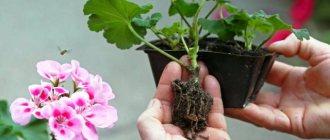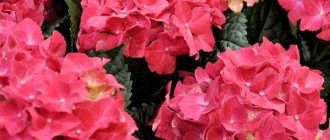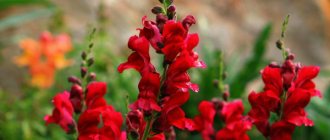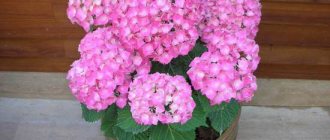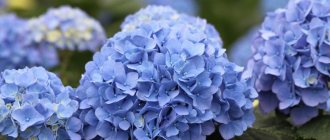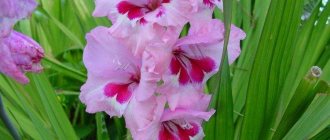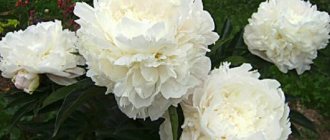Author: Elena N. https://floristics.info/ru/index.php?option=com_contact&view=contact&id=19 Category: Houseplants Published: January 24, 2019Last edits: January 11, 2021
- Cuttings
- Hydrangea turns yellow
plant (lat. Hydrangea) belongs to the genus of flowering plants of the Hydrangeaceae family, numbering about eighty species, among which there are small trees and shrubs. In the wild, hydrangea grows in both Americas, as well as in China, Japan and other countries in East and South Asia. The plant was named in honor of a certain princess of the Holy Roman Empire, whom no one remembers, and the name “hydrangea ,” which translated from ancient Greek means “vessel of water,” was given to hydrangea by systematic botanists for its exorbitant love of moisture. In Europe in 1820, the plant appeared as a house hydrangea, and only later it began to be grown in gardens. Since the hydrangea bush settled in our homes, breeders have not stopped their experiments in developing new varieties and varieties. Today, hydrangea in a pot on a veranda, terrace or balcony is as common as hydrangea in the garden.
Planting and caring for hydrangea
- Flowering: from April to November.
- Lighting: bright diffused light (at a distance of 2-3 meters from the south window).
- Temperature: during the growing season – 20 ˚C, during the dormant period – 7-10 ˚C.
- Watering: in summer - frequent and abundant, in spring and autumn - moderate and not so frequent, during the dormant period - symbolic.
- Humidity: high; in hot weather, frequent spraying of leaves is recommended.
- Feeding: from February to October once every two weeks with complex mineral fertilizers for flowering plants - rhododendrons, heathers and azaleas. In winter, no fertilizing is applied.
- Dormant period: December-January.
- Transplantation: annually throughout the life of indoor hydrangea (3-4 years).
- Pruning: in the fall after flowering, weak shoots are removed and strong ones are shortened by half their length, and in the spring, weak shoots that have stretched out during the dormant period are removed.
- Reproduction: seeds, cuttings, dividing the bush.
- Pests: aphids and spider mites.
- Diseases: gray rot, peronosporosis.
Read more about growing hydrangeas below.
What to do with potted hydrangea in spring?
Around the end of March, the overwintered hydrangea should be taken out of the basement, shed with warm water and fed. If necessary, the bush can be transplanted into a larger pot, and after watering, be sure to mulch it to retard the evaporation of moisture. Before “moving” outside, the pot needs to find a bright place in the house.
For feeding, it is better to use a special long-acting complex fertilizer for hydrangeas (in granules). Coniferous litter or pine bark is well suited as mulch - rotting, it additionally acidifies the soil, and hydrangea loves this.
You can take hydrangea into the garden no earlier than the end of April, or even in May, but at first take it into the house at night or cover it with agrofibre so that the bush does not suffer from return frosts.
Particular attention should be paid to the location of the hydrangea in the garden, because it does not like too bright lighting, which will cause the flowers to fade. While there are no buds, the east side is best
And during flowering, it is worthwhile to completely remove the bush under a canopy so that the sun hits it only in the evening.
Botanical description
Indoor hydrangea is a perennial subshrub with opposite, large, toothed, ovoid leaves 10 to 15 cm in length. The inflorescences-balls are also large - up to 35 cm in diameter, umbellate, corymbose or in the shape of a brush, consisting of two types of flowers: large sterile ones at the edges of the inflorescence and small fertile ones in the middle. The color of the inflorescences depends on the pH value of the soil: acidic soil gives them a blue tint, neutral - white or cream, and alkaline - lilac or pink, and the flower petals are colorless, and the brightly colored sepals of the flowers give the inflorescences tint and decorativeness. The fruit of hydrangea is a multi-seeded capsule. At home, hydrangea can reach a height of one meter.
When to fertilize
After a period of dormancy, the shrub needs strength to put out young shoots, large strong leaves and many full and beautiful inflorescences. To help the plant, it needs to be fed.
The first feeding is done when the buds awaken and the buds are forced out in early February. At this time, the plant needs a lot of nitrogen. Then fertilizers need to be applied once every 2 weeks. For feeding throughout the season, complex fertilizers for indoor flowers are suitable, which contain acids (hydrangea loves acidic soils) and do not contain alkali (it can destroy the flower).
Composition of complex fertilizer for hydrangeas
For your information! For large-leaved hydrangea, fertilizers for rhododendrons or azaleas are suitable.
After flowering, fertilizing is still needed to build strength for the next year, but it should be gradually reduced and stopped completely, approximately in mid-autumn. In winter, fertilizers are not needed at all.
Hydrangea is an amazing flower, and adding various substances to the soil can change the shade of the inflorescences. Moreover, their color may differ even on one bush if you water it from different sides with different additives. For example, lime will give the inflorescence a lilac hue, a mixture of ash, humus and lime - pink, a mixture of peat and potassium sulfate - blue. White inflorescences grow on neutral soils. The result is a hydrangea mix, care for which at home comes down to applying fertilizers according to the established scheme.
Hydrangea mix
Caring for hydrangea at home
Growing conditions
Hydrangea at home has the same preferences as its garden relative, and if you create the necessary conditions for it, you will be rewarded with long and lush flowering. Find a spacious, bright place for the hydrangea, protected from scorching sunlight - two to three meters from a south window, for example. The most comfortable temperature for its growth and development is 20 ºC, absence of drafts and sudden temperature changes.
During the dormant period that comes after flowering, place the plant in a dark, cool room with a temperature of 7-10 ºC and keep it there until the buds begin to wake up in February, and then return it to its usual conditions. The plant needs a cold, dark winter to restore the energy spent on flowering, and if this requirement is not met, the next hydrangea flowering may occur only in a year.
- Homemade hyacinth: planting, forcing, growing
Watering
But first of all, caring for home hydrangea involves regular and sufficient watering, which can fill this “water vessel”. In summer, watering should be frequent and abundant, in spring and autumn - moderate, in winter, during the dormant period - symbolic. Water for irrigation is settled, filtered or frozen, and then thawed to room temperature. If you live in an ecologically clean area, then rainwater will also be good.
Once a month, water the plant with slightly acidified lemon water - literally five drops of juice per liter of water. Hydrangea requires not only moist soil, but also high air humidity, so be prepared to spray it often and do not place it near operating heating devices.
Fertilizer
Growing hydrangea also involves feeding the plant during the period of active growth. Fertilizers for hydrangeas are applied once every two weeks. Complex fertilizers are suitable as fertilizing for flowering plants - azaleas, rhododendrons and heathers. They begin to feed hydrangea in February, when the plant forms new shoots. In winter, during the rest period, hydrangea does not need feeding.
By the way, in order to get a multi-colored bush in one pot, you just need to add a solution of ammonia-potassium alum (8-10 alum per 2 liters of water) or iron salts to the soil on one side of the pot, then the inflorescences on this side will turn blue, on the other hand, you can add lime to the soil, and the inflorescences will turn pink or lilac. As a rule, white or cream hydrangeas grow on neutral soil.
Pruning indoor hydrangea
Caring for indoor hydrangea includes such an important element as pruning the plant. Readers ask how to prune hydrangeas and whether it should be done if the hydrangea is growing at home and not in the garden. Domestic hydrangeas need to be pruned, and this is done twice a year: in the fall, after flowering, preparing the plant for winter rest, weak shoots are removed at the root, and strong shoots are shortened by half their length, and pruning of hydrangea in the spring is needed to remove weak shoots that are too elongated.
Transfer
Caring for hydrangea in a pot involves annual replanting - as a houseplant, hydrangea lives for 3-4 years, then you need to plant a new one. Hydrangea soil requires fertile soil, approximately the following composition: three parts each of leaf and turf soil and one part sand. Choose a spacious and wide pot, since the root system of hydrangea is horizontal. How to replant hydrangea to minimize the stress for the plant that usually accompanies this procedure? Transshipment method. And don't forget to place a thick layer of drainage material at the bottom of the pot.
- Aloe (Aloe) – care, photos, types
After you move the plant from the old pot to the new one, add enough fresh substrate to it so that it fills all the voids, but the root collar of the plant should be flush with the surface of the soil. After planting and moistening the plant, it is advisable to cover the soil in the pot with peat mulch, which will not allow moisture to quickly evaporate from the substrate.
Keeping large-leaved garden species in containers
The following describes the regime for keeping large-leaved or garden varieties of flowers in the warm and cold seasons.
From spring to autumn
At the beginning of spring, the containers are taken out of the cellar, fertilized with a mineral composition, and a layer of crushed pine needles or bark is added on top. All bad and weak shoots are completely cut off.
At the beginning of April, the pots with the plant are taken outside, protected from the cold with a special spunbond. Hydrangea should not be left in direct sunlight. By neglecting this rule, you risk ruining not only the decorative effect of the flower, but also completely destroying it.
During the spring, pots or containers with hydrangeas are placed on the southeast side, in a shaded area. After the flowers appear, it is necessary to transfer the plants to the garden
Rainwater is used for irrigation; the soil should always be moist. Important! Until the end of the summer period, it is necessary to fertilize with fertilizers once every 8-10 days.
From autumn to spring
- Immediately after the end of the flowering period, the inflorescences are cut off until strong buds appear. If there are many shoots, they need to be thinned out.
- Then all the shoots are tied up, and the flowers are left in containers until wintering. The leaves should completely fall off.
- Hydrangea is kept in a dark, cool room at a temperature range of 0 to +5 degrees. As soon as the soil becomes dry, you can put snow on top or simply water it with settled water.
Hydrangeas in large pots can be kept at temperatures from +10 to -5 without fear for the safety of the plant and its rhizomes.
Below you can see how to prepare large-leaved hydrangea for wintering:
Propagation of hydrangea at home
Cuttings
If you ask a professional gardener how to propagate hydrangea at home, he will tell you that the most reliable method of propagation for hydrangea is cuttings, and the best time for this is January-February. Cuttings rooted at this time will form a multi-stemmed bush of 3-4 shoots by next autumn. If you are late with cuttings and carry it out in March-April, you will get a single-stem plant.
It is better to cut cuttings from root shoots so that there are up to three internodes on a segment 7-8 cm long. The leaves from the bottom of the cuttings are removed, and the top ones are shortened by a third if they are small, or by half if the leaves are large. The cuttings treated along the lower cut with a root stimulator are planted in a peat-sand substrate and kept in the light at a temperature of 18-20 ºC and an air humidity of 75-80%, for which the cuttings are covered with glass jars, which must be removed daily for ventilation.
Do not forget to moisten the soil - it should not dry out. Rooting occurs in three to four weeks, then the cuttings are planted in individual pots with a diameter of 7-9 cm.
Growing from seeds
If you don't know how to grow hydrangea from seeds, the following information will be helpful. The soil for sowing seeds should consist of leaf, turf soil and humus in equal parts, but half of sand and peat should be added to them. At the end of winter, small hydrangea seeds are sown in a bowl on the surface of the substrate, but they are not planted in the soil, but are covered with glass.
The crops are ventilated daily and, if necessary, moistened with a sprayer - the soil should be slightly moist at all times. As soon as the shoots appear, the glass is removed, and when two true leaves appear, the seedlings dive into deeper containers with soil of the same composition. Strengthened hydrangea seedlings are planted in pots with a diameter of 7 cm.
Dividing the bush
This is the easiest way to propagate hydrangeas, but it requires some dexterity and great care. When replanting the plant annually, divide the bush so that all divisions have growing points and a sufficient number of roots. Both the roots and shoots of the divisions are shortened before planting, then the parts of the plant are planted in different pots, watered and the surface of the soil in the pots is mulched with peat. If you divide the bush in the spring, then by autumn your divisions will already be well rooted.
- A proven method of sowing gloxinia for seedlings - how to achieve 100% seed germination?
Replanting after purchase
You can replant hydrangea only after it has bloomed and the annual pruning has already been done. At this time, the plant prepares for a period of rest and stops its growth. If the plant was purchased in the fall, two weeks after the hydrangea appeared at home, it can be carefully transplanted into a permanent pot. She needs two weeks of rest to adapt to the new room, temperature and air movement patterns.
What is needed for planting
The new pot should be 3-4 cm wider than the previous one. The roots of any variety of hydrangea develop more horizontally than deep, so deep pots are not suitable for it.
The capacity needs to be increased every autumn, allowing the root system to grow and nourish the plant during the period of active flowering.
Optimal place
To ensure abundant and regular flowering, the flower must stand in a sufficiently illuminated area, and not be exposed to direct sunlight. If the room where the hydrangea will live has east or west windows, it should be placed not on the windowsill, but near the window, on the outside of the tulle. This way she will receive enough light, and her leaves will not be damaged by the aggressive sun.
On a north or south window, this indoor beauty can be placed without fear by its leaves directly on the windowsill.
Step by step planting process
Transplantation should begin with the preparation of the earthen mixture. The soil must contain sand and peat, their total share should not exceed 1 part, in relation to turf soil, which requires 2 parts. Be sure to place drainage at the bottom of the new pot. It is unacceptable to include humus in the substrate.
Step by step transplant process:
Prepare a pot lined with drainage. Watering the soil with the plant still in the old pot will make the transfer process easier, preserving the earthen lump. After turning the flower pot over, carefully remove it, holding it by the stems, and then immediately lower it into a new pot. Fill the voids between the rhizome and the walls of the container with substrate so that there are no air gaps left. Once transplanting is complete, water thoroughly.
Additional Information. Replanting hydrangea in the spring can affect its flowering, for which the plant was purchased. Having lost its biological rhythm, hydrangea transplanted in spring will bloom only by next winter.
Pests and diseases of hydrangea
If the humidity is too high, hydrangea is affected by gray rot, which can be dealt with by treating the plant with Bordeaux mixture, and downy mildew, which is destroyed by copper-containing preparations or fungicides. If there is insufficient moisture, hydrangeas are harmed by spider mites and aphids, which are destroyed by double treating the plant with a soap solution or actellik at weekly intervals.
Hydrangea turns yellow
Most often, the cause of discoloration of hydrangea leaves is a violation of the rules of care - insufficient watering of the plant, lack of nitrogen in the soil, or a disease such as chlorosis, which occurs due to the fact that the soil in the pot is too alkaline. Correct your mistakes and the plant will get better.
Hydrangea is drying
Sometimes this happens simply because you forget to water and spray it, sometimes because of a lack of nutrients in the soil or because the roots of the plant were injured during an awkward transplant, that is, in any case, due to a violation you rules for caring for a flower. Change your attitude to the rules: if you strictly follow them, which in itself is not difficult, you will not have problems with either hydrangea or any other plant.
Hydrangea falls
As a rule, falling is the next stage after the leaves dry out. The plant needs not just abundant watering, but regular moistening of both the soil and the air, so water the soil and spray the hydrangea leaves as the need arises.
Hydrangea doesn't bloom
This can happen if the hydrangea did not rest in winter - it used up its energy on flowering, and it was not possible for it to accumulate new ones on the windowsill near the hot radiator, and this is not its fault. She needs complete rest for 70-80 days in a cold, dark room, even if she does not look like an exhausted plant - the leaves have not fallen or dried out. Find a room or basement suitable for the dormant period, remove all the leaves, shorten the strong shoots by half, cut off the weak shoots at the root, take the pot with the plant to a suitable room and lay it on its side. This needs to be done in December, so that in February you can bring the hydrangea back to life. By observing this ritual annually, you can be sure that the hydrangea will definitely bloom in due time.
Main problems and solutions
Is there something wrong with your hydrangea? Below we will look at the most common problems.
Indoor hydrangea does not bloom
If the plant is still young, there is nothing to worry about: the first time a hydrangea can bloom even after 5 years.
If everything was fine before, the problem may be due to the fact that the flower was pruned before wintering. Buds will no longer appear on new shoots; they needed last year's ones. The lack of light and fertilizing can also have an effect, as well as their abundance.
“What should I do then?” - newcomers ask in panic. Take care of your plant, observing the golden mean in all aspects of care. Almost always all problems (if they are not insect damage) come down to the consumption of light and water.
My hydrangea is turning yellow
Often the cause is a lack of acid in the soil. Try watering the flower with water acidified with lemon juice.
My hydrangea leaves have dry spots and thinning.
This is an obvious burn of the leaves: remove the flower from the sun, look for a more shaded place to permanently locate the pot.
There are yellow spots on the leaves of my hydrangea and a gray coating on the back side.
This powdery mildew is a frequent visitor to homes with young plants. Their affected shoots need to be removed, or it would be better to burn them, and the flower should be treated with special fungicides.
My hydrangea leaves are covered in brown growths.
This is rust, most likely caused by overwatering or heavy fertilizing.
Diseased leaves are removed and, as is the case with all such lesions, the hydrangea is treated with fungicides.
Someone has settled on my hydrangea
A sticky web indicates the appearance of a spider mite, which can be removed with a soap solution or chemicals from specialized stores.
Leaf aphids are clearly visible: small pests swarm on the leaves. They can be removed by applying tobacco ash or special chemicals.
Don't be afraid to plant this beautiful flower for dreamers. A noble and surprisingly bright hydrangea will decorate the house with rich, pointed foliage and caps of small flowers that look like colored clouds. A little “discipline” and it will bloom happily. Good luck with your care!
- Caring for spathiphyllum at home
- Indoor flowers and plants for the kitchen - choose unpretentious, useful and beautiful
- How to get rid of midges in flowers
- How to care for aloe at home
- 12 super ideas for crafts for the home and kitchen
- Kitchen panels - ideas and instructions
- Kitchen wall decor - 12 super ideas
- Kitchen design and decor - site guide
Types of home hydrangea
large-leaved hydrangea (Hydrangea macrophylla) , or garden hydrangea, and its numerous varieties, of which there are already more than 100 today, are grown in pots
Varieties of white and cream-colored inflorescences:
- M-me E. Mouillere - the diameter of the inflorescences is 18-20 cm, the flowers are from 2 to 6 cm, the leaves of this hydrangea are somewhat narrower than those of other varieties;
- Souer Tharese - flowers of regular shape, inflorescence diameter 15-17 cm, the bush itself is short - 35-40 cm, early flowering variety.
Pink varieties:
- Goliath - large inflorescences of a deep pink hue with a diameter of up to 30 cm, the edges of the sepals are deeply cut, the bush is 60-70 cm high, blooms late;
- Hamburg - compact flowers 4-5 cm in diameter, pink, collected in an inflorescence with a diameter of 16-18 cm, bush height 35-40 cm;
- Europe - a profusely flowering variety 40-50 cm tall with large flowers up to 6 cm in diameter, the inflorescence is 20-25 cm across.
Red varieties:
- Red sensation - burgundy-red inflorescences that become violet-burgundy when iron salts or aluminum sulfate are added to the soil;
- Prima - the diameter of the inflorescences is 15-18 cm, but the flowers themselves are small - no more than 3.5 cm in diameter, the stem height is 20-25 cm, a medium-flowering variety.
Blue varieties:
- Early Blue - bright blue inflorescences, tall variety;
- Ramars Mars is a compact variety, inflorescences up to 20 cm in diameter, over time the ends of the petals turn green.
Trimming steps
Removing old flowers. As soon as they wilt, carefully cut them back using hand shears. Place the clamps under the inflorescence at the top of the stem, and so on for each one. At the same time, you can remove dead or dying shoots by cutting them off at the root.
Removing the oldest shoots. If the hydrangea is more than 3 years old, then the splendor of its flowering will diminish over time and you can no longer fully enjoy its beauty. But all this is reversible; you just need to cut off (reduce) the old shoots to a third of their number. To remove thicker shoots, you should be equipped with a delimbing machine. These stems need to be cut back to soil level.
Pruning a flower to reduce its size. To do this, use the same algorithm as when removing the oldest stems: simply cut the branches to a third of the nearest internode. In general, hydrangea grows rapidly, so it will not have a neat shape for long. This type of pruning does not help maintain the health of the flower, so do it only if the flower takes up too much space. If you are going to plant another hydrangea, then select a site for it where it can grow quietly.
